To celebrate National Volunteers’ Week, today we focus our attention on a project to improve the catalogue descriptions for some of the most varied and spectacular visual material found at The National Archives. These are photographs, paintings and drawings which were registered for copyright protection between 1842 and 1924 and are held in the record series COPY 1.
Registering copyright
To register copyright for a creative work, individuals needed to submit an application for registration to the Stationers’ Company. The copyright records held by The National Archives are those created as a result of The Copyright Act of 1842 and various subsequent copyright acts. The 1842 Act set the term of copyright at either 42 years, or the life of the author plus seven years, whichever proved longer.
From 1842, the application for copyright protection consisted of an entry form, which asked for a description of the creative work being registered and the names and addresses of the copyright owner and the copyright author (usually the creator). After completing the entry form, the person registering the copyright would attach a representation of the creative work and send the form off to Stationers’ Hall. The COPY 1 record series contains these entry forms.
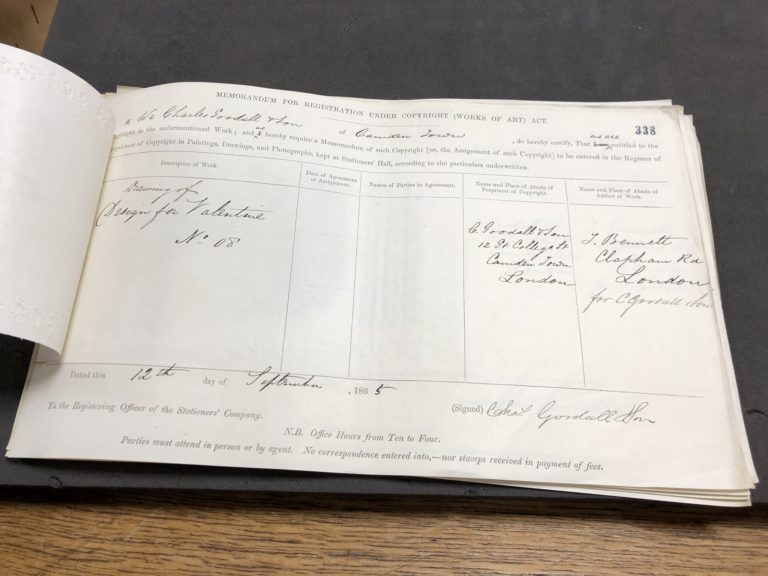
Cataloguing photographs
In a previous stage of this cataloguing project, volunteers entered detailed item-level catalogue descriptions for the photographs in the copyright collection. This amounted to nearly 130,000 individual photographs. As a result of this stage of the project, you can now search our catalogue for keywords or for names of photographers, and get instant results.
Some interesting photographs that are far easier to find now include those of Queen Victoria’s Diamond Jubilee, Charles Darwin’s portrait and Eadweard Muybridge’s experimental photographs of human and animal movement. While the copyright collection has not yet been digitised en masse, some of the photographs have been scanned and are available to view in our Image Library.
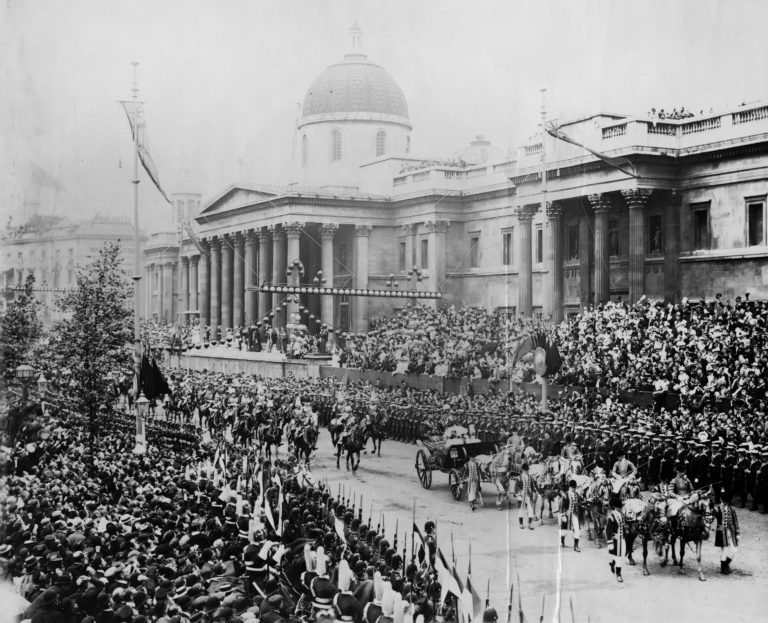
Paintings and drawings
Recently, we have started on the next stage of the project, where volunteers are entering item-level descriptions for the paintings and drawings in the collection. These materials include wonderful examples of Victorian and Edwardian branding, advertising and packaging as well as beautiful illustrations, cartoons and copies of paintings.
These include illustrations by artists such as Walter Crane, who specialised in books for children, and paintings by artists including Frederick James Aldridge, Charles Edward Dixon and Louis Burleigh Bruhl. There are also cartoons, such as those by Tom Browne and T W Ellison.
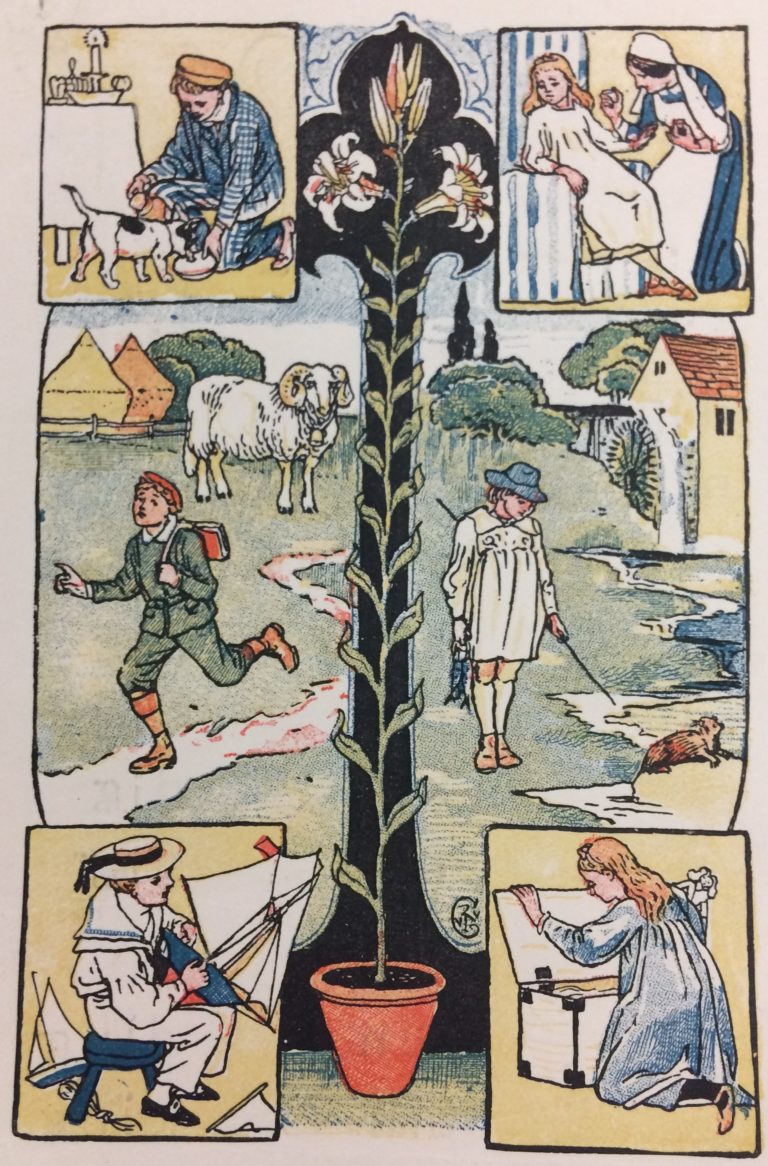
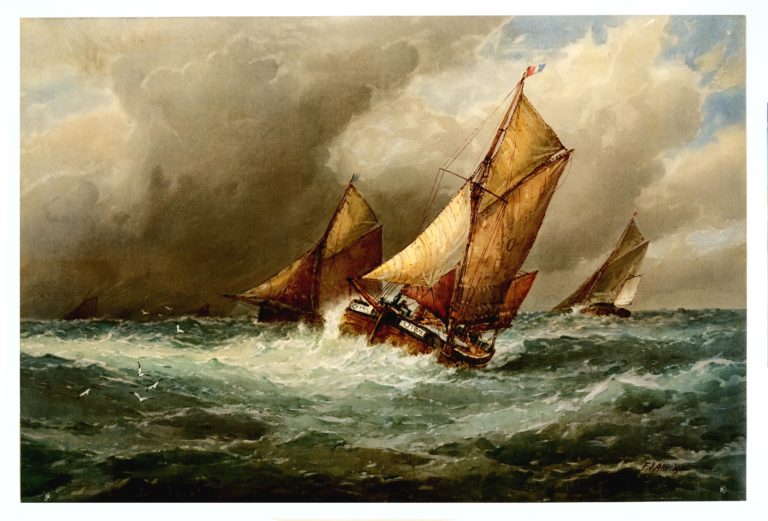
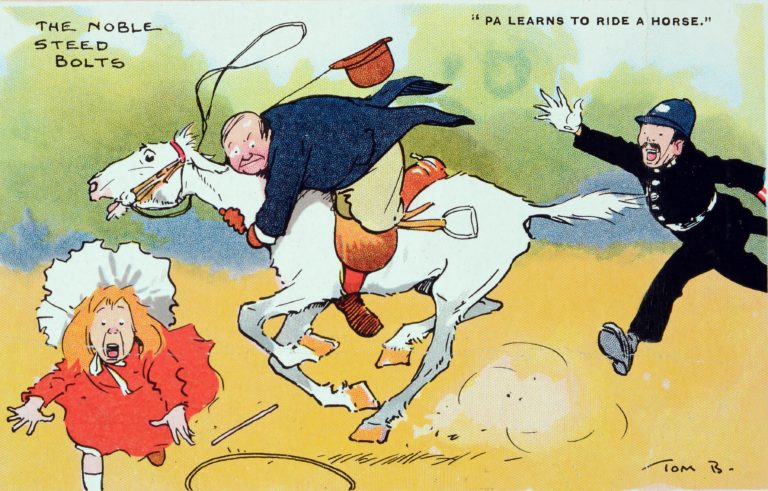
Advertising, branding and packaging
One area where the copyright records are particularly rich is advertising, packaging and branding. Individuals registering images for copyright tended to do so because there was some commercial reason to do so. Therefore images created to promote products, events and services are widely represented in the records.
The advertisements found in the records include those for famous brands such as Colmans, Cadbury, Pears Soap, Oxo and Coca-Cola.
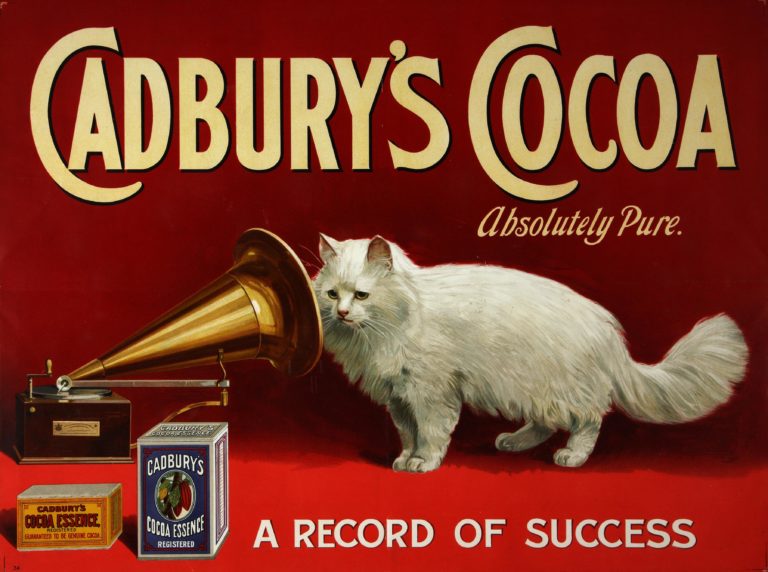

The entry forms do not give any additional information about each image beyond a description, which itself is usually entirely literal. They don’t record the purpose of the image or how it was intended to be used. So there are many images which present a bit of a mystery to us today, such as this illustration of two seals firing cannons. Exactly what this image was designed to illustrate or advertise is still unknown.
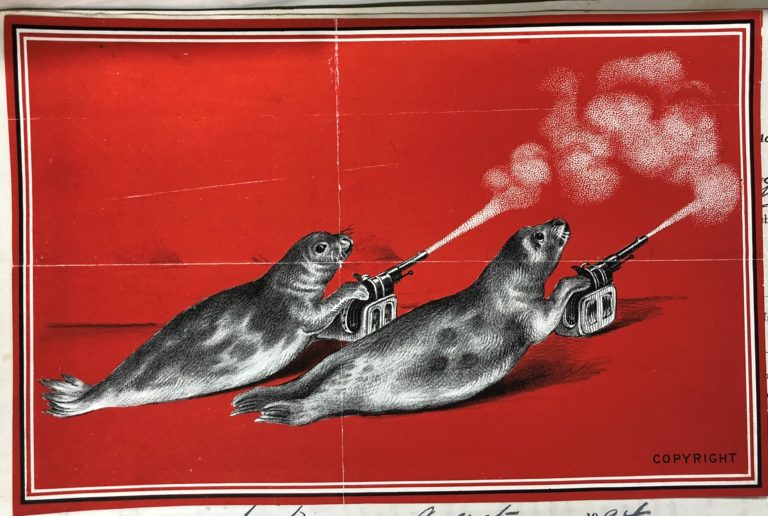
The process of cataloguing the paintings and drawings has only recently begun, so there is a long way to go. We expect the project to be completed by December 2022.
A searchable visual collection
The benefits of providing item-level descriptions for a series like COPY 1 are endless. Currently, there are thousands of fascinating images hidden in boxes which are listed in our catalogue as ‘Paintings and Drawings’. The lack of detailed descriptions makes it impossible for anyone to find these images without manually leafing through the forms in the boxes. Searching the boxes in this way can cause damage to the entry forms and images. One of the benefits of this cataloguing project is that it should reduce unnecessary handling of the records
When this cataloguing project is complete, researchers and members of the public will be able to easily search our online catalogue, Discovery, for keywords, names of artists and illustrators, and produce instant results leading them to the exact location of images in the collection. This will open up many opportunities for new areas of research into 19th- and 20th-century art, commerce and advertising.
A valued team
We are extremely grateful to our hard-working volunteers working on this project and would like to take this opportunity to celebrate their efforts this Volunteers’ Week!
Perhaps you could relist the documents listed as “Sterling” instead of “Stirling” in COPY 1, which were originally catalogued correctly and then someone changed them.
My first work for TNA quite some years ago, was to type up handwritten descriptions of COPY 1 material; this was done at home and I never saw any of the actual originals (except once, where one photo had been accidentally left between the pages.) Amongst the many clergymen, sports teams, West End theatre casts – some big names there – and adverts, were materials used in lectures by travellers and missionaries, one of the latter a gruesome description of the execution in slow and agonising stages of an adulterous wife in central China. (Finally, the head is struck from the armless and legless torso. )
I would have been happy to do more of these duing the lockdown.